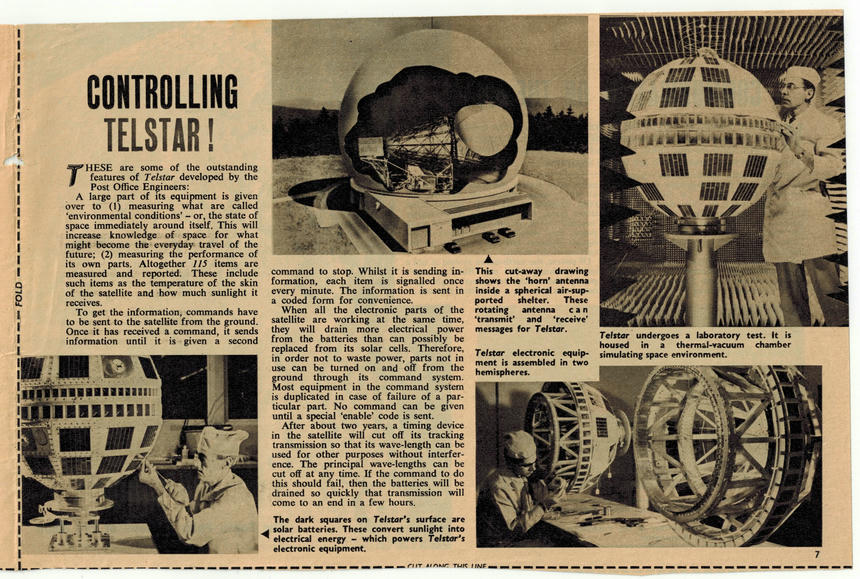Scrapbook 3: The Story of Telstar (7)

CONTROLLING TELSTAR!
THESE are some of the outstanding features of Telstar developed by the Post Office Engineers:
A large part of its equipment is given over to (1) measuring what are called ‘environmental conditions’ — or, the state of space immediately around itself. This will increase knowledge of space for what might become the everyday travel of the future; (2) measuring the performance of its own parts. Altogether 115 items are measured and reported. These include such items as the temperature of the skin of the satellite and how much sunlight it receives.
To get the information, commands have to be sent to the satellite from the ground. Once it has received a command, it sends information until it is given a second command to stop. Whilst it is sending information, each item is signalled once every minute. The information is sent in a coded form for convenience.
When all the electronic parts of the satellite are working at the same time, they will drain more electrical power from the batteries than can possibly be replaced from its solar cells. Therefore, in order not to waste power, parts not in use can be turned on and off from the ground through its command system. Most equipment in the command system is duplicated in case of failure of a particular part. No command can be given until a special ‘enable’ code is sent.
After about two years, a timing device in the satellite will cut off its tracking transmission so that its wave-length can be used for other purposes without interference. The principal wave-lengths can be cut off at any time. If the command to do this should fail, then the batteries will be drained so quickly that transmission will come to an end in a few hours.
The dark squares on Telstar’s surface are solar batteries. These convert sunlight into electrical energy — which powers Telstar’s electronic equipment.
This cut-away drawing shows the ‘horn’ antenna inside a spherical air-supported shelter. These rotating antenna can ‘transmit’ and ‘receive’ messages for Telstar.
Telstar undergoes a laboratory test. It is housed in a thermal-vacuum chamber simulating space environment.
Telstar electronic equipment is assembled in two hemispheres.